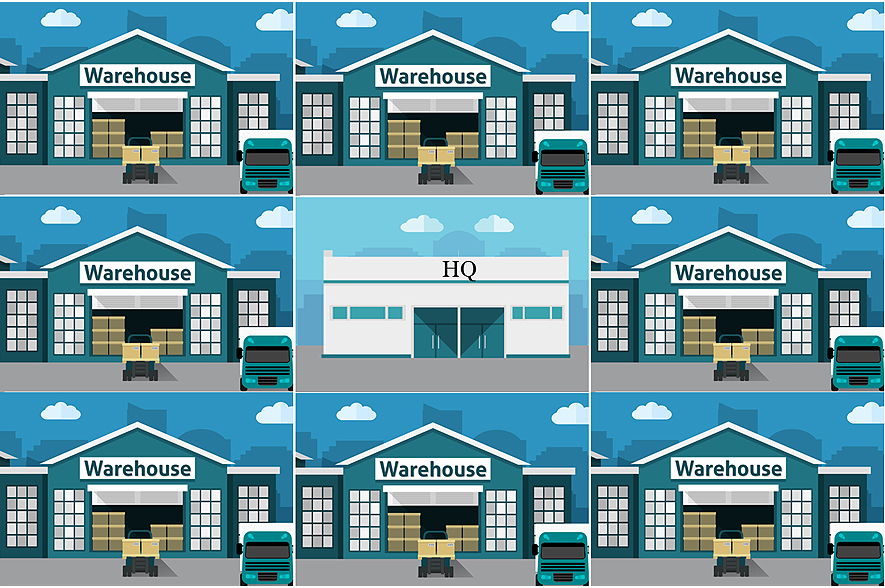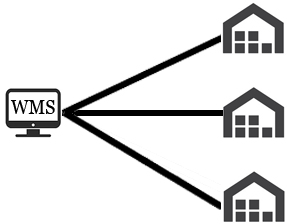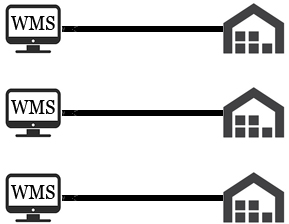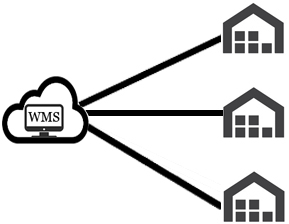A Big Question for Multi-Warehouse WMS Implementations

The strategic planning stage is obviously critical for WMS implementations, and one commonly glossed over aspect is multi-warehouse configurations. The implementation team is focused on the success of the first site with both budget and timeline crunches in mind, and they lose sight of the overall big picture. That first, single site is simply one part of a multi-year global WMS rollout strategy. It’s much harder to change the tires mid-race on this one, so let’s get it right the first time. There are a nearly infinite number of variations on the below setups, but whether on-premise or cloud hosted let’s break down the two main options:
Implement Warehouses Within the Same Instance:

Good
- Simplifies IT maintenance (hotfixes, patches, etc…)
- Streamlined “big picture” visibility across all warehouses
Bad
- All sites share risk of introducing new functionality that might just benefit one site
- Not ideal for coordinating maintenance downtimes across different time zones
Bottom Line
This option can make sense for a smaller operation with limited IT resources that has fewer customers and sites that are all in roughly the same geographic area.
Each Warehouse in Own Independent Instance and Server:

Good
- Better for a 3pl servicing multiple clients with varying requirements
- Drastically less risk in the event of a major defect
Bad
- More work on the IT side
- Less big-picture visibility
Bottom Line
Due to the extreme riskiness of the “all-in-one” method, most medium-large warehouses are forced to adopt this strategy.
After Answering That Question…Do You Cloud?


Good
- Easier to receive product updates
- Easier to scale up resources with company growth
- Generally, less likely to experience IT-related outages
Bad
- Provider MUST have fast-responding quality support
- Provider MUST have secure data
Bottom Line
The answer is “probably.” In recent years we are seeing more customers move to the cloud. If you must be up-to-date on the latest features and tech, go with the cloud option. Should you have a basic setup and want to keep things in-house, then consider going on-premise.
There are many ways to skin a cat for multi-warehouse implementations, so consider the above as the main umbrella options and not cast in-stone. You especially have to have all internal and external stakeholders aligned before diving in and setting a direction for a multi-warehouse implementation versus a single operation install.
How do you handle multi-warehouse implementations? Feel free to drop us a line if you have any questions, or feedback on this post! We are an official reseller of Blue Yonder WMS, and provide the full gamut of related WMS professional services.
This post was written by:

Recommended Content
Setting Up Your CPG Supply Chain for a Successful New Year
The start of a new year is a critical time for consumer packaged goods companies. Inventory levels, warehouse workflows, and operational efficiency can set the tone for the entire year. Proactive planning now can prevent disruptions, reduce costs, and ensure your...
Avoid a Disaster – Make WMS Testing a Lifestyle
Continuous testing isn’t a phase or a hobby—it’s how you stay ahead. By embedding testing into every step of your operations, you can transform outcomes, reduce risk, and drive continuous improvement. Download the full article here to read more and discover how to...
WMS Best Practices: Tracking, Reporting, and Staying Compliant
In this episode of Rack and Roll: Future Proofing Your Warehouse, we’re diving into WMS best practices for tracking, reporting, and staying compliant—especially in highly regulated industries like life sciences and pharmaceuticals. Join us as we chat with Garrett...
5 Supply Chain Software Updates for Compliance
The regulatory landscape for pharma and medical device companies is shifting faster than ever. With the DSCSA now fully enforced, FDA PreCheck requirements rolling out, and new AI regulations emerging, your supply chain software needs to keep pace. For many...
Blueprint for Supply Chain Compliance
Download this comprehensive blueprint for achieving supply chain compliance, ensuring efficiency, risk mitigation, and regulatory adherence at every step.
